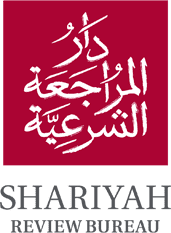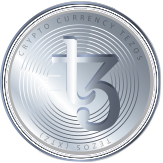Tezos (XTZ) is an open-source, self-upgradable blockchain platform designed for creating and hosting decentralized applications and assets. It’s stakeholders are tasked with the responsibility of governing upgrades for the protocol, including the amendments made to the governing process itself. Its native digital token is known as a Tezzie or Tez.
Tezos launched on June 30, 2018, after a successful initial coin offering (ICO) that raised over $230 million. The ICO was controversial, however, as it was followed by legal disputes and internal conflict within the Tezos Foundation, the Swiss non-profit organization that was responsible for managing the funds raised during the ICO.
The team behind Tezos includes co-founders Arthur Breitman and Kathleen Breitman, who developed the concept for Tezos and led the development of the platform. Arthur Breitman is a former hedge fund manager and mathematician, while Kathleen Breitman is a former strategy consultant and lawyer. The team also includes a number of other experienced developers, researchers, and advisors.
Tezos is a self-amending decentralized platform for building dApps. It’s similar to Ethereum in a way that both blockchains support dApps built using smart contracts. Tezos, however, has a few unique features that distinguish it from Ethereum. The most notable one is the network’s on-chain governance, which allows holders of XTZ (Tezos’ native coin) to vote on the network’s future direction. The voting feature is designed to avoid the splitting of the community that usually results in hard forks or the depreciation of its cryptocurrency. The self-amending nature of Tezos’ protocol means that the blockchain is much easier to upgrade and is always open to adding the latest innovations to its network.
Baking
Tezos uses a system called baking to validate transactions. It’s essentially the proof-of-stake model, although Tezos’ version is a variation called liquid proof of stake. Proof of stake is a validation method that doesn’t require much energy, so it’s more eco-friendly.
 Anyone who has at least 8,000 XTZ can become a baker and validate transactions on the Tezos blockchain. When they validate a block of transactions, they receive a staking reward, which consists of XTZ tokens.
Anyone who has at least 8,000 XTZ can become a baker and validate transactions on the Tezos blockchain. When they validate a block of transactions, they receive a staking reward, which consists of XTZ tokens.
People who have fewer than 8,000 XTZ can become delegates. A delegate gives baking rights to a baker, which gives the baker a greater chance of winning blocks and earning rewards. The baker pays shares of the staking rewards to the delegate.
Bakers are also in control of governance on Tezos. Any baker can submit a proposal during the proposal period, up to a maximum of 20 proposals per baker. The most upvoted proposal advances to an exploration vote where 80% of voting bakers must support the proposal for it to progress.
If a proposal passes the exploration vote, then a new test chain is forked out for 48 hours to evaluate the proposed changes. After the test period, bakers vote to decide if the proposal will pass. If so, the testnet chain will become the mainnet chain.
Tezos protocol
The consensus protocol on Tezos is known as the Tezos Protocol, which is a proof-of-stake (PoS) consensus algorithm. In a PoS consensus algorithm, the validators (also known as “bakers”) who validate transactions and maintain the integrity of the blockchain are chosen based on their stake (or “bond”) in the network.
Here’s how the Tezos Protocol works:
- A baker broadcasts a block of transactions that they wish to add to the Tezos blockchain.
- Other bakers on the network verify the block and reach consensus on its validity.
- If the block is deemed valid, it is added to the Tezos blockchain, and the baker who proposed it is rewarded with XTZ tokens.
- If the block is deemed invalid, it is rejected and the baker who proposed it is punished by losing a portion of their bond.
One of the key features of the Tezos Protocol is its use of a cryptographic technique known as a random beacon to randomly select the bakers who will propose and validate blocks. This helps to ensure that the baker selection process is fair and unbiased.
“Tezos is a self-amending decentralized platform for building dApps.
Bakers on the Tezos blockchain verify and validate transactions by checking that they conform to the rules and policies of the Tezos network. This includes checking that the transactions are properly formatted and signed, that they do not violate any network rules, and that they do not conflict with any other transactions in the network.
To verify and validate transactions, bakers use a variety of cryptographic techniques and protocols, including hashing, digital signatures, and cryptographic proof systems. These techniques allow bakers to ensure the integrity and security of the Tezos network, and to protect against fraud and tampering.
Once a transaction has been verified and deemed valid, it is added to a block of transactions along with other valid transactions. The block is then broadcast to other bakers on the network, who verify the transactions in the block and reach consensus on their validity. If a majority of bakers agree that the transactions in the block are valid, the block is added to the Tezos blockchain and the baker who proposed it is rewarded with XTZ tokens. If a majority of bakers disagree and determine that the transactions in the block are invalid, the block is rejected, and the baker who proposed it is punished by losing a portion of their bond.
Tezos Use Cases
Some possible use cases include:
- Financial transactions: Tezos can be used to facilitate fast, secure, and transparent financial transactions, including the transfer of assets and the issuance and management of financial instruments.
- Supply chain management: It can be used to track and verify the movement of goods through the supply chain, helping to improve efficiency, reduce costs, and increase transparency.
- Governance: Tezos can be used to facilitate decentralized governance and decision-making, allowing stakeholders to vote on network upgrades and other important issues.
- Digital asset management: It can be used as a platform for launching and managing digital assets, such as tokens representing ownership of real-world assets.
- Decentralized applications (dApps): Tezos supports the development and deployment of decentralized applications (dApps), which can be used for a wide range of purposes, including gaming, social networking, and more.Overall, the use cases for Tezos are diverse and constantly evolving, reflecting its versatility as a blockchain platform and its potential to revolutionize a wide range of industries and applications.
Tez Token (XTZ) Use Cases
XTZ is the native cryptocurrency of the Tezos blockchain, a decentralized, open-source blockchain platform that supports smart contracts and decentralized applications (dApps). XTZ is used as a means of exchange and a store of value on the Tezos network.
Some potential use cases for XTZ include:
- Transactions: XTZ can be used to send and receive payments on the Tezos network.
- Staking: XTZ holders can participate in the Tezos network’s proof-of-stake (PoS) consensus mechanism by “staking” their tokens, which involves holding them in a wallet and using them to validate transactions and earn rewards.
- Governance: XTZ holders can participate in the governance of the Tezos network by voting on proposed protocol upgrades and other decisions.
- DApp development and usage: Developers can use XTZ to pay for transaction fees and other costs associated with building and using dApps on the Tezos platform.
- Trading: XTZ can be bought and sold on cryptocurrency exchanges, allowing people to speculate on its price or use it as a store of value.
Conclusion
Tezos is an open-source tool, and therefore the program’s source code can be modified by other developers. Tezos is programmable and is simply a facilitator and platform. Users can engage the platform to conduct different types of transaction. Therefore, the activities on Tezos should be reviewed at a user level as opposed to a platform level as it can facilitate any type of transaction, compliant or otherwise. Therefore, a Sharia governance framework cannot be applied to Tezos as a platform, rather guidance and governance can be given to developers looking to use the platform to ensure that non-compliant transactions are assets are not executed.
Based on and subject to the foregoing information, and for the purposes of this conclusion, nothing has come to our attention that causes us to believe that Tez (XTZ) are in breach of Sharia* principles and rulings as adopted by the scholars conducting this research.
*Attention is drawn to the term ‘Sharia’ and ‘Sharia compliant’ and its interpretation thereof as expressed in the following link https://shariyah.net/glossary/



